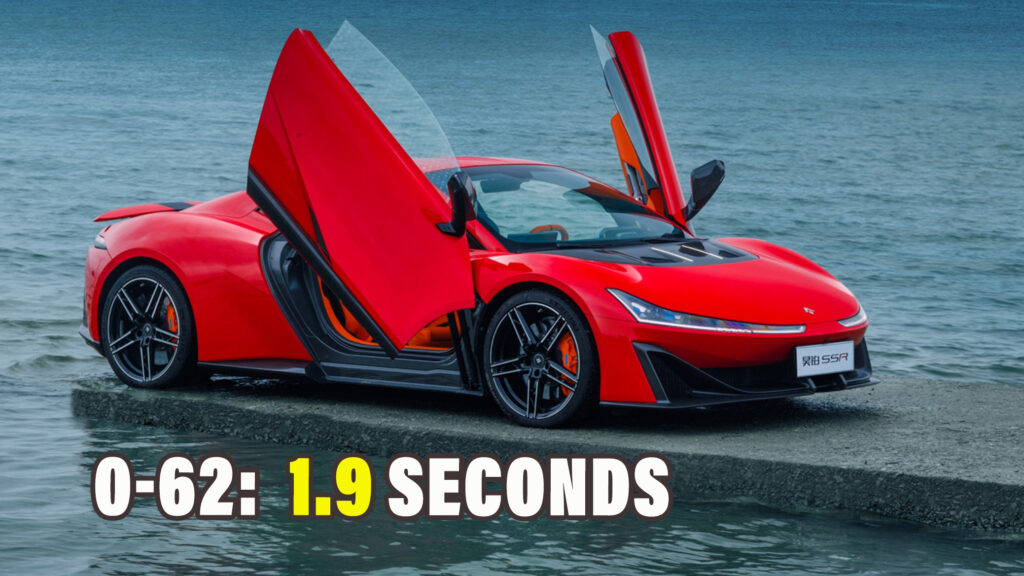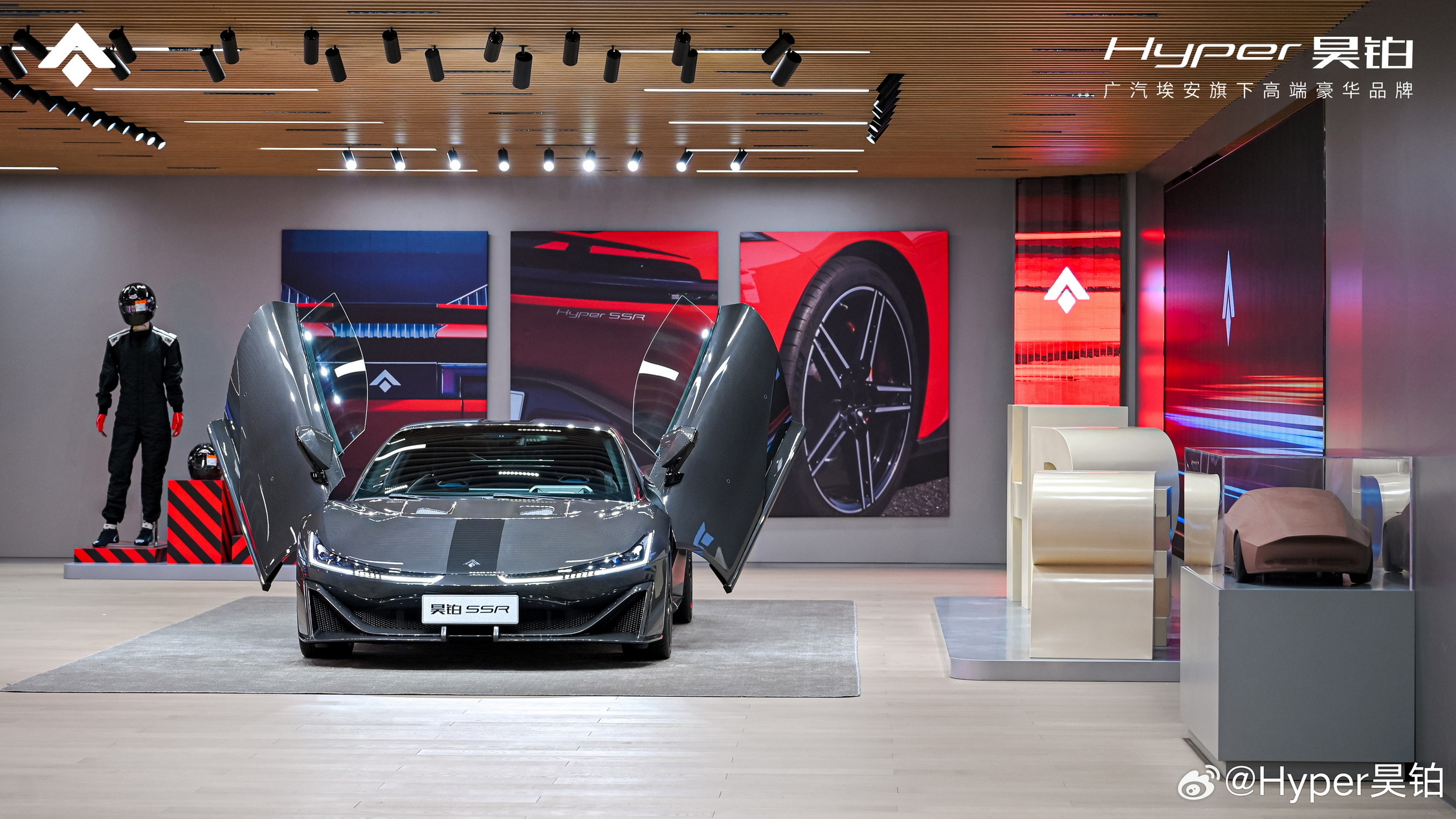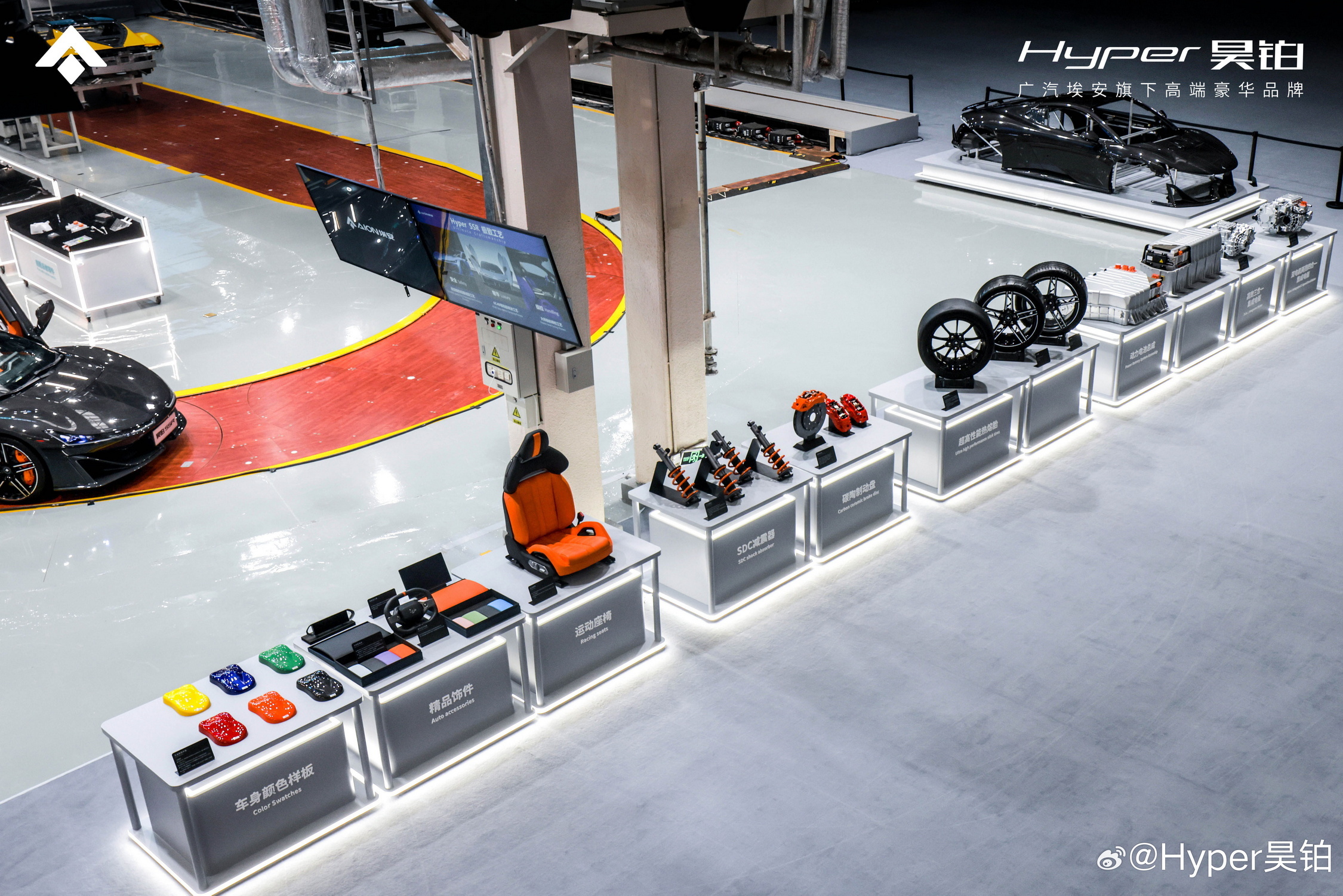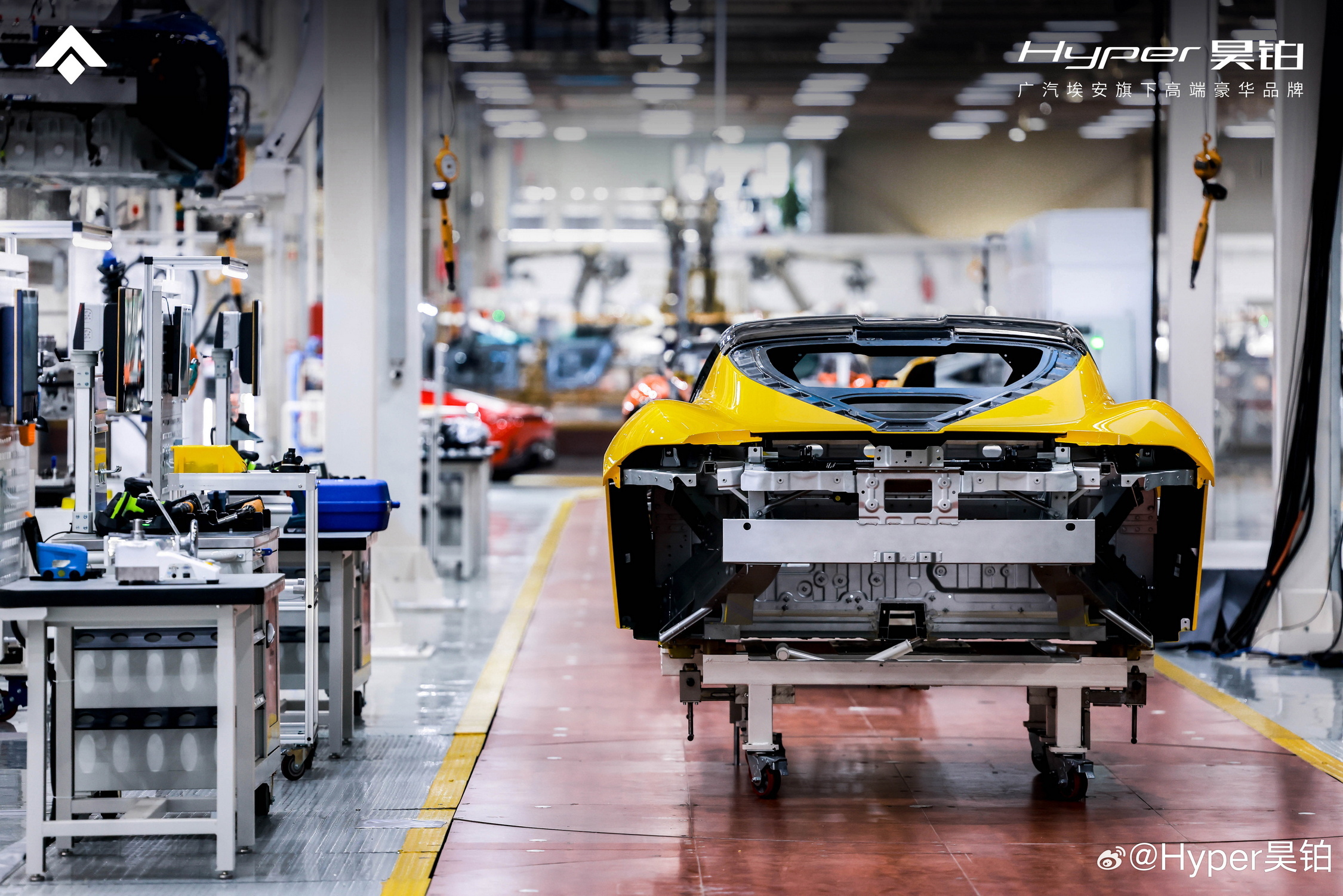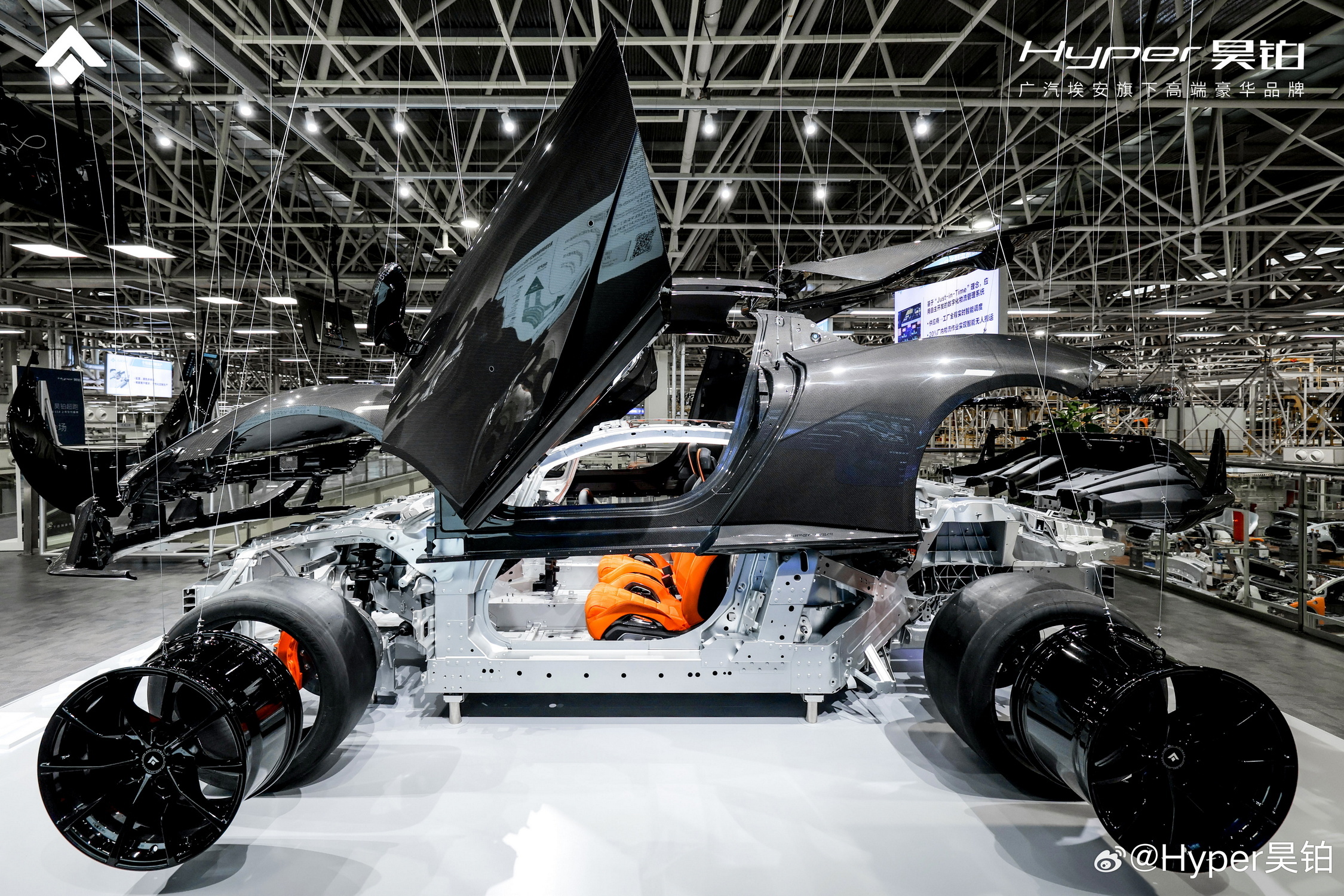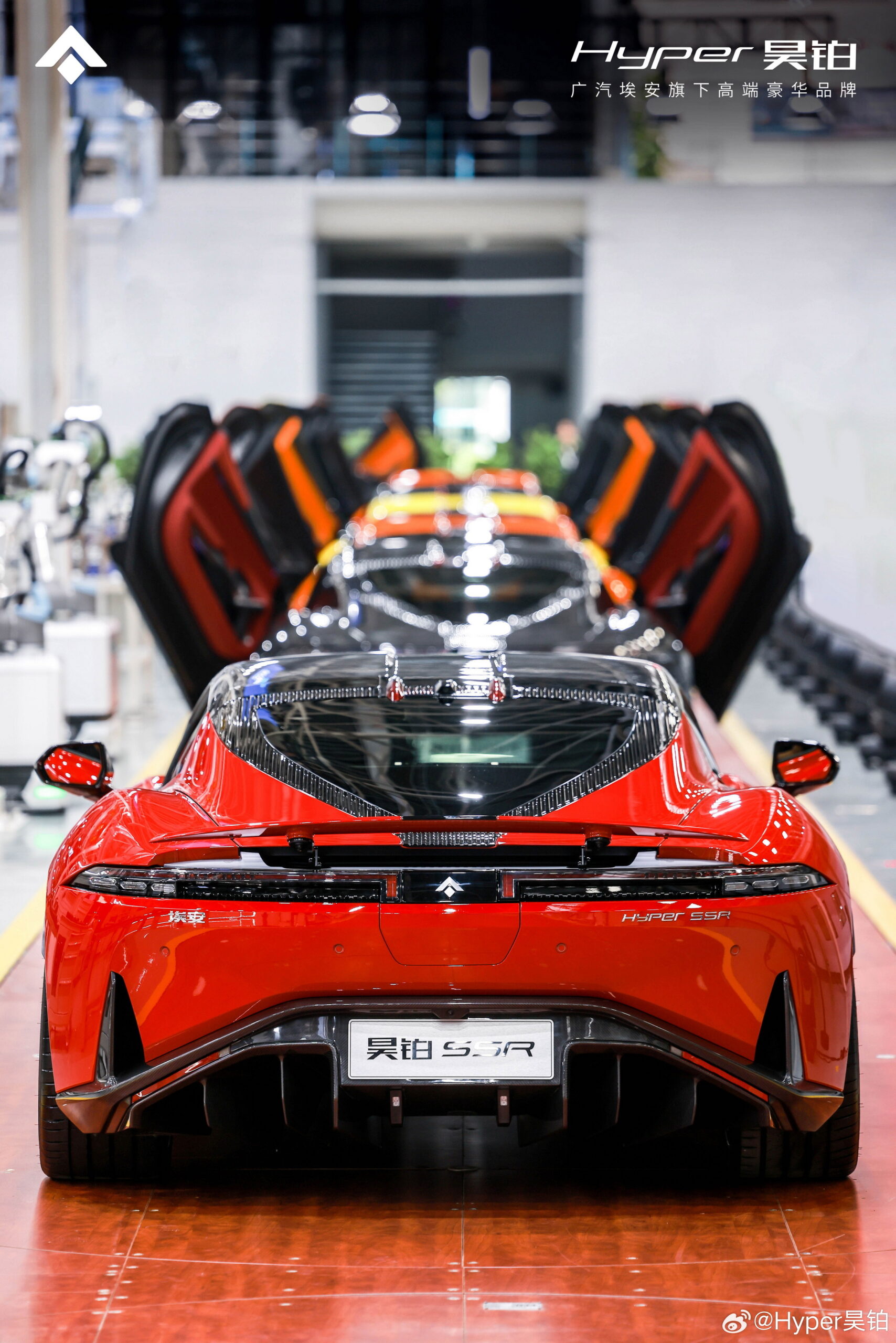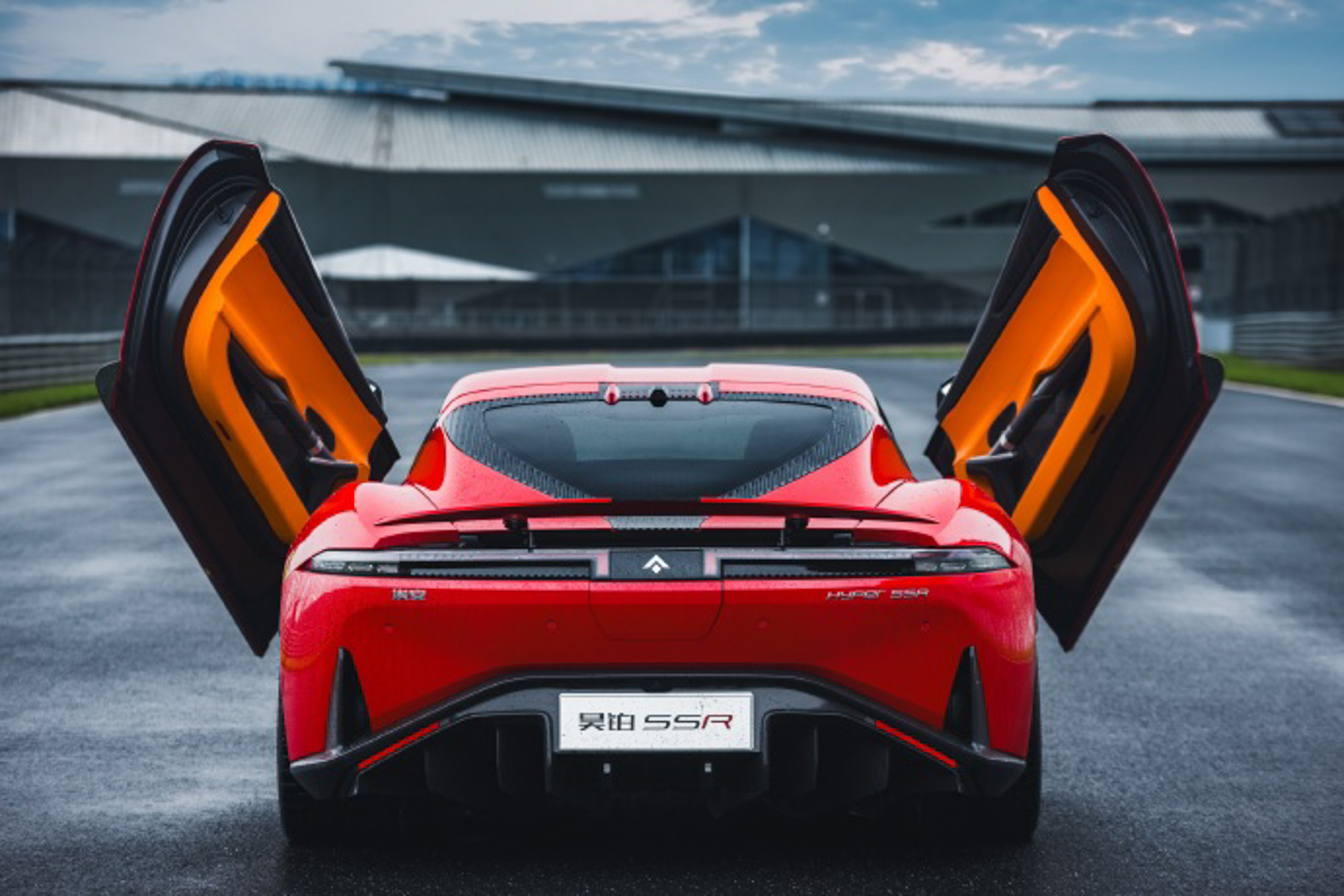China isn’t simply intent on beating Western carmakers in the family EV market. It wants a slice of the electric supercar pie, too. And here’s the tool it’s using for that first cut, the GAC Aion Hyper SSR. The SSR is the first commercially available electric supercar to come out of China and with a starting price of 1,286,000 yuan ($176,400) it’s less than a tenth of the price of a Rimac Nevera, Pininfarina Battista or Lotus Evija, all of which cost more than $2m.
We’ve reported on the SSR a few times over the years, starting with its appearance as the Enpulse Concept back in 2020, and then again last September when GAC unveiled the production car along with some bold performance claims that included a 1.9-second zero to 62 mph (100 kmh) time. Fast forward 13 months and the SSR – which stands for Super, Sport, Race, is ready for the road, and according to GAC and its sub-brand Hyper that sub-2-second sprint time is still valid, at least for two of the three available models.
Related: GAC’s New Aion Hyper SSR EV Hits 60 MPH In 1.9 Seconds But Is Cheaper Than Most Ferraris
The lineup starts with the entry level SSR, the one with the $176k price we mentioned earlier. It gets the same 1,207 hp (900 kW / 1,224 PS) and 907 lb-ft (1,230 Nm) drivetrain as the other duo in the range, but needs 2.3 seconds to reach 62 mph.
To drop that time to 1.9 seconds you need to step up to the 1,386,000 yuan ($190,100) SSR Speed, or better still, the 1,686,000 yuan ($231,200), which is equally rapid in a straight line but promises to be even niftier around a circuit thanks to a more performance-focused chassis setup. Car News China reports that the SSR (though it seems vague about which SSR) has a top speed of 155 mph (250 kmh) and can travel 314 miles (506 km) on a full charge of its 75 kWh battery.
Bearing more than a passing resemblance to a Ferrari 458, especially in the red paint shown in Hyper’s promo pictures, the Hyper SSR is a handsome machine, though the strange cutaway at the bottom of the door where it meets the quarter does make it look a bit like it’s been T-boned at an intersection. The doors open upwards, like on a McLaren, and there’s an active rear spoiler, but overall, it’s fairly restrained from a styling point of view. And it’s not immediately obvious from the pictures that the entire body is reportedly made from carbon fiber. Hyper says this contributes to a low curb weight, but doesn’t say how low the final figure is.
Inside, drivers are treated to heated and ventilated seats, a 14.6-inch tablet touchscreen and a compact 8.9-inch digital instrument pack visible over the top of a chunky, rectangular steering wheel. Would you like to see the Hyper SSR be exported to markets outside China? Leave a comment and let us know.




